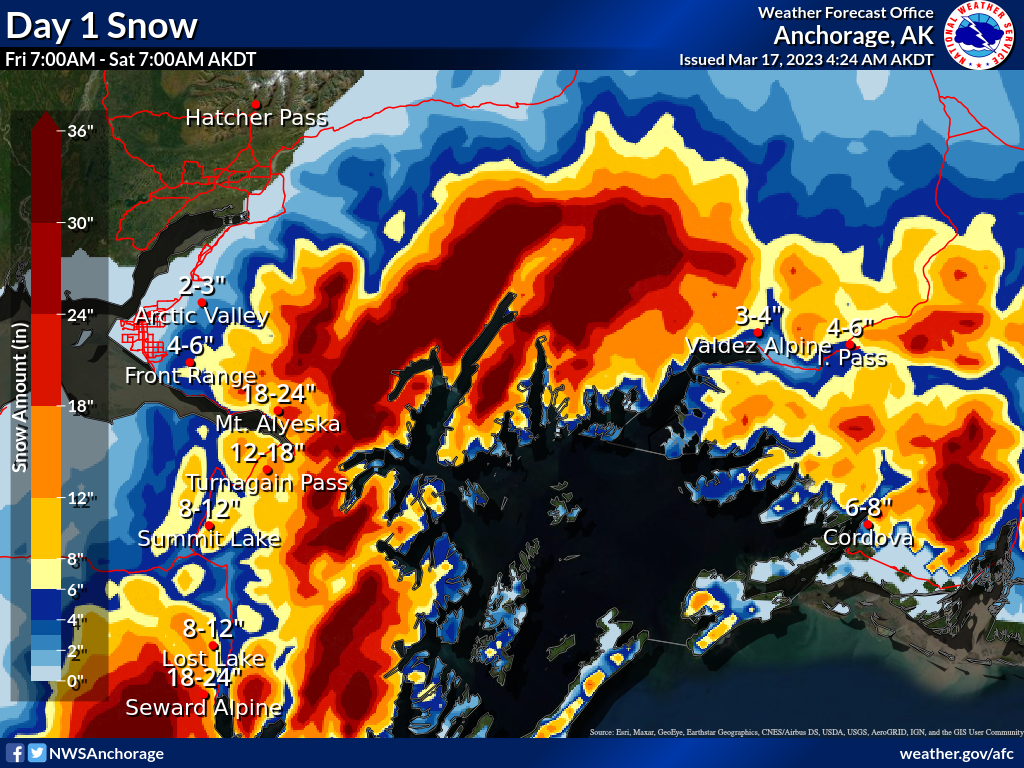Turnagain Pass
|
|
The avalanche danger will rise to HIGH today at all elevations. Up to a foot or more of snow and strong winds are expected, which will rapidly increase the avalanche danger. Natural and human triggered avalanches 1-3′ deep in areas with active wind loading are very likely. In areas sheltered from the wind natural and human triggered avalanches 1-2′ deep are likely because the new snow from earlier this week did not bond well with the old snow surface. We recommend avoiding avalanche terrain today and being aware of any overhead slopes that could release naturally and run out down to lower elevations.
SUMMIT LAKE / LOST LAKE / SNUG HARBOR: Heavy snowfall is expected across the eastern Kenai Penninsula, with up to a foot or more new snow in favored areas. Avalanche danger will increase rapidly with strong winds and snowfall and we recommend avoiding avalanche terrain while the snowpack adjusts to this new load.
Transmission inspection using snowmachines: Chugach Electric Association will be inspecting the transmission lines along the non-motorized side of the Turnagain Pass (between Tincan and Johnson Pass) using snowmachines on one day between Thursday 3/16 and Tuesday 3/21.
Turnagain Pass Avalanche Awareness Day – this Saturday!
On March 18th swing by the Turnagain Pass moto lot on your way to or from your backcountry ride or ski!! Test your beacon skills, chow down on hot dogs, and bring your questions for CNFAIC forecasters. The Alaska Avalanche School will be there along with a chance to demo snowmachines from Alaska Mining and Diving Supply and Anchorage Yamaha and Polaris. More details HERE



